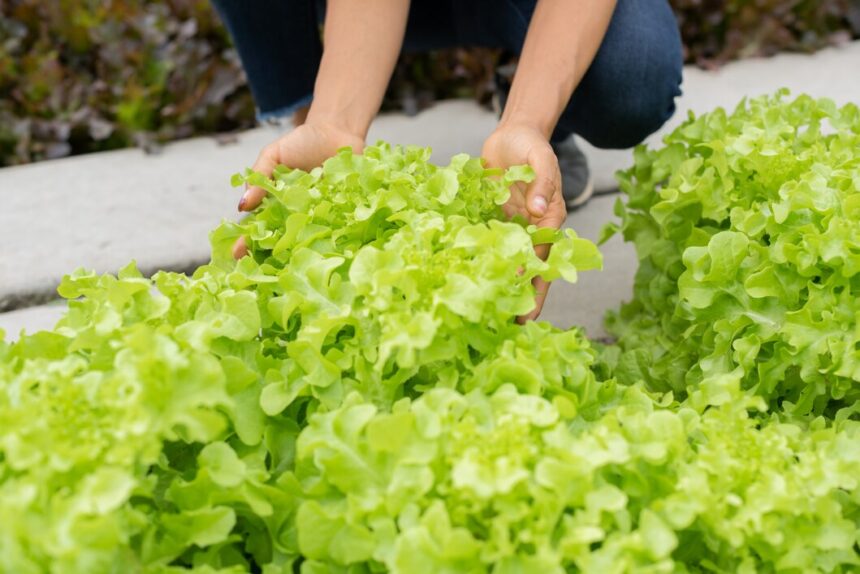Lettuce, a staple in salads and various culinary dishes, is susceptible to tip burn, a condition that affects the quality and yield of this leafy green vegetable. Recognizing the early signs of tip burn is crucial for growers to take timely corrective measures and ensure a successful harvest. Here are ten signs to watch for, along with explanations of causes and remedies:
1. Brown or Yellow Edges on Leaves:
Tip burn often manifests as brown or yellow discoloration along the edges of lettuce leaves. This symptom starts at the leaf margins and progresses inward if left unchecked.
2. Brittle or Crispy Leaf Texture:
Affected leaves may become brittle or overly crispy, losing their usual tender texture. This change in texture is a result of cell damage caused by insufficient water and nutrient uptake.
3. Wilting Despite Moist Soil:
Even when soil moisture levels appear adequate, lettuce leaves with tip burn may still exhibit signs of wilting. This is due to the impaired ability of the roots to absorb water effectively.
4. Irregular Leaf Growth:
Leaves affected by tip burn may display irregular growth patterns, such as curling or cupping, as a response to stress from nutrient imbalance or environmental factors.
5. Delayed Growth or Stunted Plants:
Plants suffering from tip burn often show slowed growth rates or stunted overall development. This is a direct consequence of reduced photosynthesis and nutrient assimilation.
6. Increased Susceptibility to Pests and Diseases:
Weakened plants are more vulnerable to pest infestations and diseases. Tip burn compromises lettuce’s natural defenses, making it more susceptible to common pests like aphids or diseases like fungal infections.
7. Yellowing or Browning of Inner Leaves:
As tip burn progresses, the symptoms extend from outer leaves to inner leaves. Yellowing or browning of inner leaves indicates advanced stages of nutrient deficiency or imbalance.
8. Leaves Developing White or Transparent Spots:
In severe cases, affected leaves may develop white or transparent spots, indicating cellular necrosis and irreversible damage caused by prolonged nutrient stress.
9. Burnt Appearance at Leaf Tips:
The most characteristic sign of tip burn is the burnt appearance at the leaf tips, where tissue necrosis occurs due to calcium deficiency or uneven water distribution within the plant.
10. Bitter Taste in Leaves:
Leaves affected by tip burn may acquire a bitter taste, compromising their flavor and culinary appeal. This taste alteration is a result of altered metabolic processes within the plant.
Causes and Remedies:
Causes:
- Nutrient Imbalance: Inadequate calcium uptake or imbalance in other essential nutrients.
- Environmental Factors: Fluctuations in humidity, temperature extremes, or poor air circulation.
- Water Management: Inconsistent watering practices leading to drought stress or waterlogged conditions.
Remedies:
- Maintain Adequate Calcium Levels: Amend soil with calcium-rich additives like gypsum or lime to ensure proper nutrient availability.
- Ensure Consistent Watering: Provide regular, deep watering sessions to maintain soil moisture levels and prevent drought stress.
- Monitor Environmental Conditions: Shield plants from extreme temperatures, improve air circulation, and consider shading during hot periods.
- Adjust Fertilization Practices: Apply balanced fertilizers and perform soil tests to correct any nutrient deficiencies or imbalances promptly.
- Harvest and Prune Affected Leaves: Remove damaged leaves to promote new growth and prevent the spread of tip burn.
By recognizing these early signs of tip burn in lettuce and implementing appropriate remedies, growers can effectively manage this condition, ensuring healthier plants and higher yields for a thriving lettuce crop. Regular monitoring and proactive care are essential to maintaining optimal plant health and productivity in lettuce cultivation.
Join 'Farmers Mag' WhatsApp Channel
Get the latest Farming news and tips delivered straight to your WhatsApp
CLICK HERE TO JOIN






